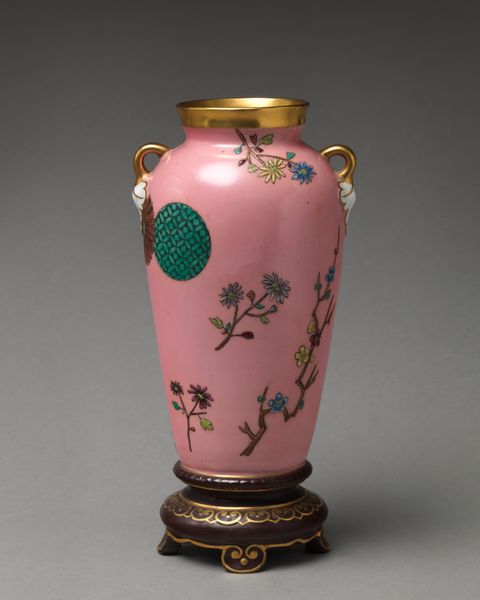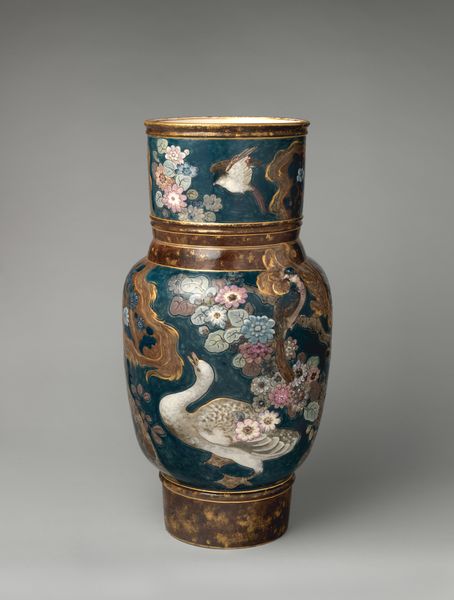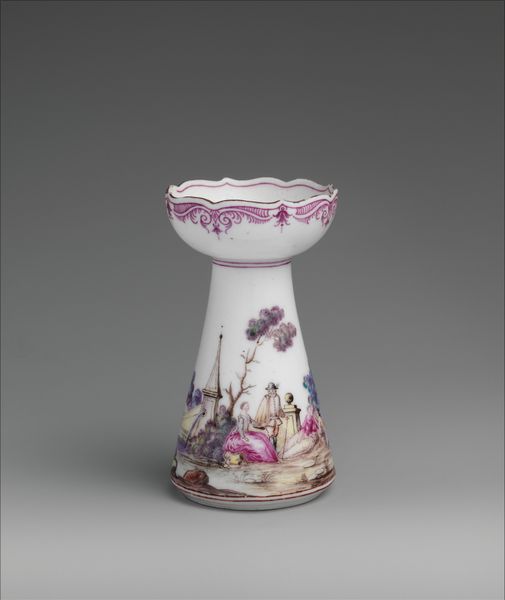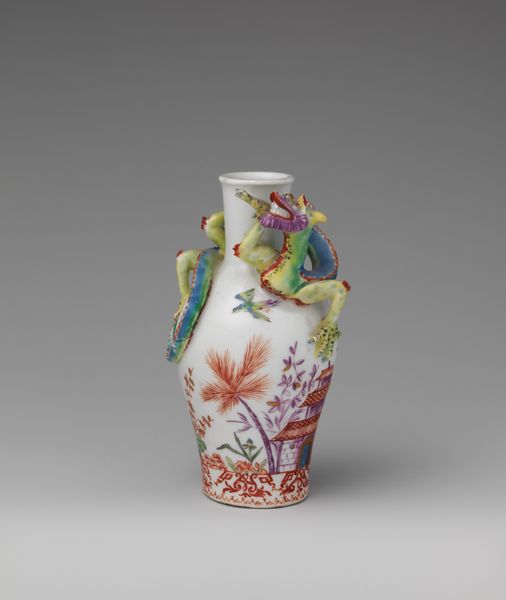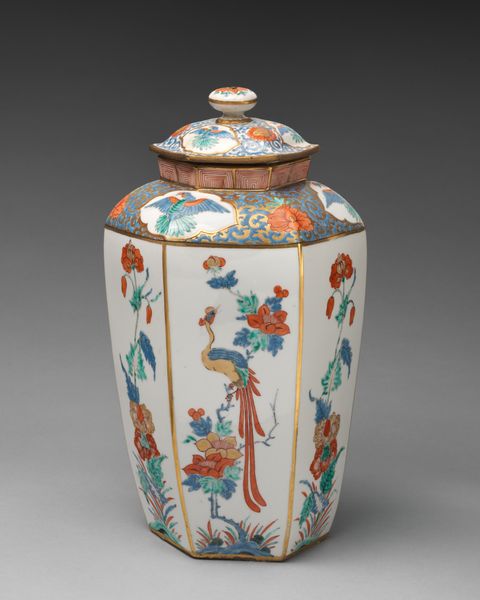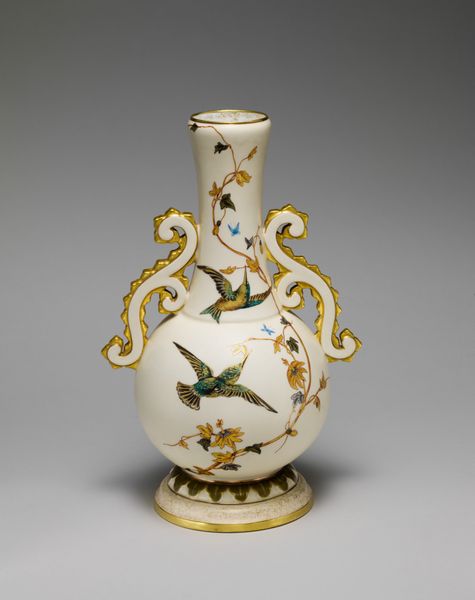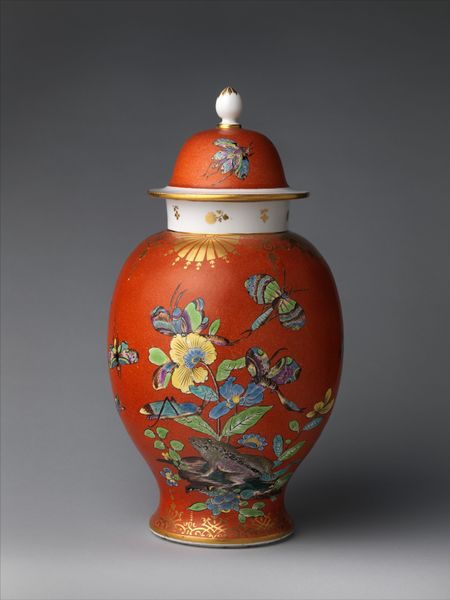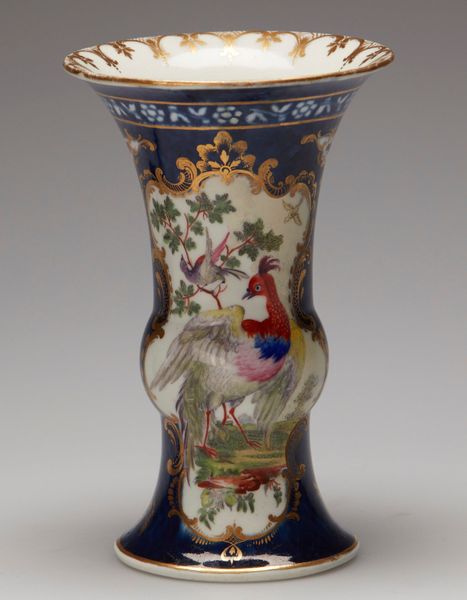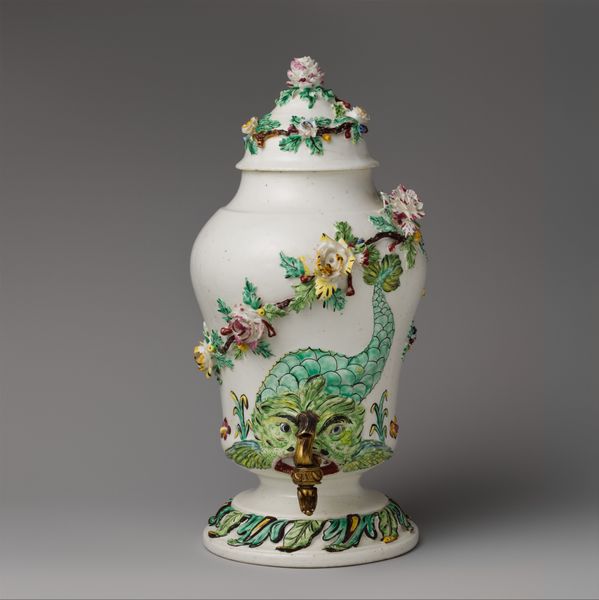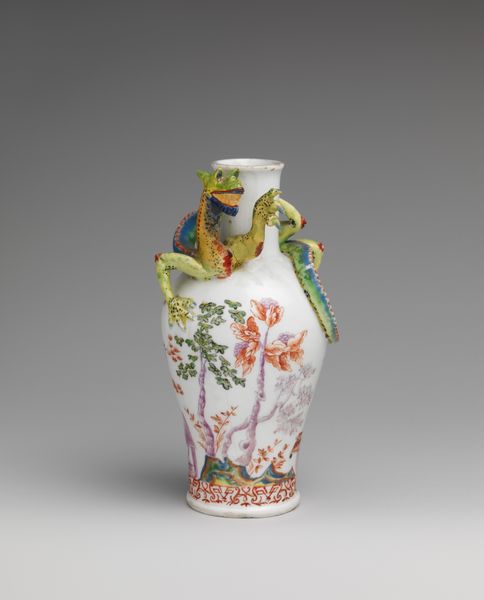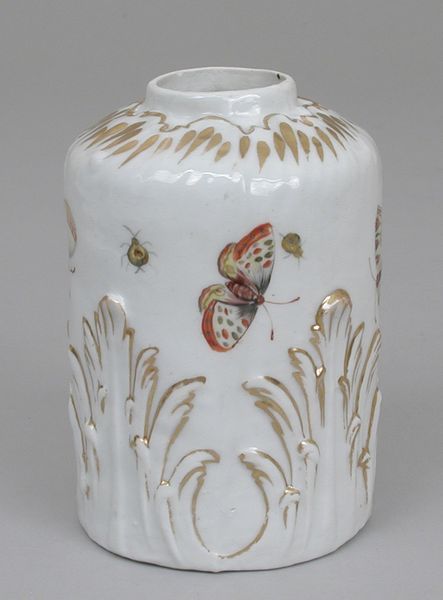
ceramic, guilding, porcelain
#
ceramic
#
guilding
#
porcelain
#
ceramic
#
japonisme
#
decorative-art
Dimensions: confirmed: 85 × 4 1/8 × 3 3/4 in. (215.9 × 10.5 × 9.5 cm)
Copyright: Public Domain
Curator: Here we have a Minton porcelain vase, "Vase with flowering branch motif", created around 1872. Its currently held at the Metropolitan Museum of Art. What are your initial thoughts on this work? Editor: Well, it immediately strikes me as… surprisingly pink! The form is elegant, but that bubblegum hue paired with the gilded trim is quite something. And porcelain is, of course, deceptive. It feels delicate, but the process… that’s incredibly labor intensive, involving specific clays, high temperatures, and skilled craftspeople. Curator: The pink certainly makes a statement. I see it as indicative of the Japonisme influence that was sweeping Europe at the time. The overall color might evoke cherry blossoms, which carry potent symbolism in Japanese art—signifying beauty, transience, and renewal. The birds contribute to this imagery as well. Editor: Right, Japonisme! You see it in the motif, the asymmetry, and the stylized depiction of nature. I’m curious about Minton's specific source material here. Were they directly copying Japanese pieces, or interpreting them through a European lens? The manufacturing processes for something like this must have involved divisions of labor – designers, potters, painters. What status was afforded to the artisans who decorated these pieces? Curator: Minton, like many European firms, definitely drew inspiration—and sometimes outright copied—from Japanese designs. The inclusion of Japanese elements certainly added value and novelty to their products. Looking closely, these specific avian forms remind me of freedom and joy. Consider the Western interpretation of those ideas merging with Eastern motifs; these vessels themselves become symbols of cultural exchange. Editor: It’s interesting you mention value because what’s implied is that there’s value created in both cultural and production methods. Porcelain was associated with luxury. Mass production was shifting these items into a wider market, the question becomes, at what cost were they able to make them more widely accessible? How did that influence earlier craft techniques? Curator: A fascinating question of accessibility and authenticity, especially relevant today! Ultimately, this piece represents the visual language of its era—a blending of cultures mediated by the hands and the industrial processes of Victorian England. Editor: Indeed. I now look at it less as an isolated object, and more as a node in a complex web of materials, labor, and cross-cultural exchange.
Comments
No comments
Be the first to comment and join the conversation on the ultimate creative platform.
